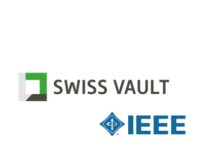InsightaaS perspective: 451 Research is one of the world’s leading sources of insight into cutting edge technologies (including areas that are important to InsightaaS and our principals, such as cloud, collaboration, analytics, and sustainable IT). The company is also a leading supplier of information on mergers and acquisitions in the IT industry, which it publishes in its subscriber-only M&A KnowledgeBase; pieces designed for public consumption can be found on 451 Research’s Inorganic Growth blog.
As regular visitors to this site are aware, InsightaaS.com works with 451 Research to bring occasional thought leadership pieces to our readers. Generally, these are focused on technologies and technology management, but given the importance of recent M&A transactions (such as Dell’s privatization and IBM’s sale of its server business), we thought that this report, “2014 M&A Outlook — Storage and systems,” would be important to IT planners trying to understand the scope and direction of hardware M&A activity.
The section presented below is actually an extract from a longer report which adds detail on recent deals, an overview of the impact that trends ranging from the Open Compute Project and the Internet of Things to silicon photonics and 3D printing will have on M&A (and market) opportunities, and specific drill-downs into storage, data protection and cloud-related technologies. Readers with an interest in obtaining more information on IT M&As are encouraged to contact 451 Research directly, or to contact InsightaaS at reportinfo@insightaas.com.
By Simon Robinson, John Abbott and Dave Simpson of 451 Research; special to InsightaaS.com

Overview
In 2013, the overall value of hardware-oriented M&A deals rose sharply, from $27.5bn in 2012 to $71.4bn. Overall volume was 290 transactions, compared with 314 in 2012. However, one deal alone — the dramatic leveraged buyout (LBO) of Dell by Michael Dell and Silver Lake Partners — accounted for a massive $24.8bn of that total, leaving the rest of the year’s acquisitions valued at a combined $46.6bn — much healthier than in 2012, but still down from 2011’s $51.5bn total. In fact, the Dell LBO was worth more in total than the next three largest transactions combined: Applied Materials’ reach for rival semiconductor manufacturing equipment maker Tokyo Electron ($9.3bn), Koch Industries’ pickup of electrical connector manufacturer Molex ($7.2bn), and Avago Technologies’ acquisition of semiconductor firm LSI ($6.6bn).
The list of the 20 largest deals illustrates the diversity of targets last year. It includes eight focused on semiconductor components and IP (the majority networking or interconnect-oriented); three on storage; two on industrial automation; and one each on computer systems, chipmaking equipment, gaming, retail, automotive, display and 3-D printing. The list demonstrates the continuing squeeze on the chip industry, where the massive investments involved are not only driving consolidation of the smaller players, but are also raising awareness of emerging technology trends where time to market is paramount — including 3-D printing, silicon photonics, solid-state storage and the Internet of Things.
Systems
Last year was a terrible one for the PC industry, hit as it was by a double whammy: the poor reception of Windows 8, and the inexorable rise in use of new end points, from mobile devices and tablets to virtualized and cloud desktops. Both reduced the motivation for consumers and enterprises alike to refresh their PCs. The decline in core PC sales was a factor in Dell’s giant LBO as the company sought a respite from the public markets while it completes its transition toward higher-end enterprise systems, storage and networking (see below).
After some uncertainty a few years ago, HP now appears committed to remaining in the PC business, but it will have to work hard in order to find ways of refashioning its PC operations so that they can offer a worthwhile ROI. IBM, which sold its PC unit to Lenovo way back in 2005, appears to be one step ahead, and just agreed to divest its low-end x86 server business (where margins are also extremely tight) to Lenovo for $2.3bn. Dell and Fujitsu are rumored to also have shown an interest in the business, but Lenovo was always the frontrunner.
VMware’s acquisition of Desktone in October was also partly driven by the decline of PCs, and was closely followed by Amazon’s endorsement of desktops as a service (DaaS), judged the event most likely to take DaaS technology mainstream after years of only mild interest and take-up. But Desktone’s sale was pretty much the only virtual desktop deal of any significance in 2013, as most of the startups with core technology in this sector have already been acquired.
For the next wave of activity, look toward mobile device management (MDM), a fast-evolving area that is starting to become closely aligned with desktop virtualization as the major vendors look for a way to provide the tools that companies need to manage the entire spectrum of devices that they must deal with. The most obviously relevant transaction illustrating this convergence last year was Citrix’s purchase of Zenprise for $327m (the deal was actually announced in December 2012 but closed in January). In November, there was a second wave of activity when Oracle agreed to buy Bitzer Mobile for its mobile enterprise application management tools (amount undisclosed) and IBM handed over an estimated $300m for Fiberlink Communications, an MDM company that was directly competitive with Zenprise. And just as this report was being finalized, VMware announced the acquisition of AirWatch for $1.54bn.
As noted, last year’s semiconductor component M&A activity was driven, as usual, by the continued consolidation of smaller companies that alone don’t have the resources to continuously develop and market their products. However, some deals were struck in response to developing market trends. New workload demands from large-scale Internet datacenters are one of the factors driving M&A activity around a new generation of high-speed interconnects.
In mid-2013, Mellanox bought two companies to further this end: silicon photonics startup Kotura (with which it hopes to change the economics of optical interconnects, which today are prohibitively expensive); and IPtronics, an optical components maker that should help it bridge between current fiber-optic and future silicon-photonic products. And in August, analog and mixed-signal component maker Maxim Integrated Products spent $605m on Volterra Semiconductor — its largest-ever acquisition. Volterra had been pushing hard to establish itself as a supplier of power management chips for enterprise IT equipment, particularly high-density servers, communications equipment and storage.
In a somewhat bleak year for notable systems M&A activity, Cadence Design Systems’ $380m reach for Tensilica — its largest-ever acquisition and one that attracted the highest valuation in its very active M&A history — caught our attention. Announced in March, only four months after MIPS Technologies sold itself (in separate transactions) to Imagination Technologies and Allied Security Trust for $450m, this deal highlights the growing importance of modular silicon intellectual property in a world where system-on-a-chip (SOC) packages are at the center of new design processes.
As they move further into silicon IP and SoC development, the potential overlap between the electronic design automation giants (Cadence, Mentor Graphics and Synopsys) and silicon IP licensing specialists (most notably ARM Holdings) is becoming a sensitive point. Meanwhile, Intel is front-lining its own SoC development work, methodologies and eco-systems as it looks beyond its core PC and server markets into mobile and the Internet of Things.
Even ARM, traditionally a cautious acquirer, bolstered its internal R&D resources last year with the purchase of Finland’s Sensinode, one of an emerging set of startups focused on the Internet of Things. Sensinode has been working on the establishment of interoperable protocols and Web services intended to help connect potentially billions of devices — of all types and capabilities — to the Internet. But not all of ARM’s forward-looking investments bore fruit in 2013 — at the very end of the year, low-energy server startup Calxeda, for which ARM had provided seed funding, announced that it had ceased operations and entered a restructuring process, having failed to secure a new funding round. Systems development is an expensive business, and while we expect Calxeda’s technical assets to be picked up, it seems that a new, non-x86 generation of hyper-dense servers is still too uncertain a prospect for most investors at this stage.
Storage
For the third year in a row, storage M&A activity in 2013 was relatively subdued. Total deal value was up quite considerably year over year — with just under $2.5bn worth of storage acquisitions (and storage-centric vendors being the targets), compared with less than $1.5bn in 2012. And also like 2012, there were no real blockbuster transactions that exceeded $1bn in valuation; in fact, the largest storage deal was HGST’s $685m purchase of PCIe flash card specialist Virident Systems. Other notable transactions — from a size perspective, at least — included another M&A move by Western Digital, the pickup of flash specialist STEC in June for $340m; Seagate’s end-of-year proposed takeout of Xyratex for $374m; Cisco’s surprise acquisition of WHIPTAIL in September for $415m; and SanDisk’s purchase of SMART Storage Systems in July for $307m.
Of course, there were a couple of notable whoppers last year that involved storage to some degree. Dell’s $24.8bn LBO is designed to keep the company out of the glare of Wall Street while it strives to reinvent itself as a far broader provider of systems, software and services to small, midsized and large enterprises, and storage is one key area of this plan. Some of the largest acquisitions Dell has inked in recent years have been in the storage arena, examples being EqualLogic and Compellent. The other big deal worth mentioning is Avago Technologies’ proposed $6.6bn purchase of components and semiconductor specialist LSI. Although storage has been a less notable element of LSI’s business since it divested its Engenio storage systems business to NetApp in 2011, the company is still a major player in HDD and flash disk semiconductor components, and has been a moderately active acquirer in the storage world in recent years.
Overall, 22 storage-centric providers were acquired in 2013, compared with 24 in 2012. As in previous years, most M&A activity centered on smaller, tuck-in style purchases of startups. However, last year was a relatively quiet one for the major storage vendors that have driven most storage M&A activity over the years. The likes of EMC, NetApp, HP, IBM and Dell bought few storage companies last year.
The reasons behind this vary. EMC has binged on storage acquisitions in recent years and has few gaps left to plug (although it still bought two small storage-focused firms, ScaleIO and iWave). While the same could be said for HP, IBM and Dell, all three have struggled to wrestle storage market share back from EMC, and so the appetite for more storage purchases may be less pronounced than in the past. NetApp, meanwhile, is more focused on nailing its transition to clustered ONTAP, and is developing an all-flash array (AFA) product internally.
By contrast, many of the more interesting transactions in 2013 were driven by media manufacturers — SanDisk, Seagate and Western Digital’s HGST, perhaps indicating that the storage sands are beginning to shift as things like cloud/hyperscale computing and flash in the datacenter start to become more tangible. PCIe flash card specialist Fusion-io has been another notable acquirer in recent years as it seeks to broaden its portfolio — and total addressable market — by moving into adjacent sectors; it continued this last year by scooping up hybrid storage startup NexGen.
Signature deals from 2013
|
Source: The 451 M&A KnowledgeBase
Note – this is an extract from a longer analysis of the 2014 M&A outlook for storage and systems. For more information, please contact 451 Research, or contact InsightaaS at reportinfo@insightaas.com.








